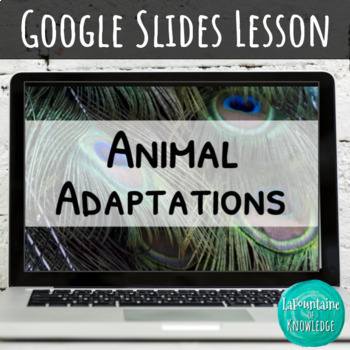Animal Adaptations Physical and Behavioral Google Slides Lesson
- Google Slides™

What educators are saying
Description
This Google Slides presentation introduces students to the topic of animal adaptations. The lesson:
- describes adaptations as either physical (camouflage, mimicry, body parts, and chemical defenses) or behavioral (instinct and learned)
- provides several examples of each type of adaptation with bright, colorful photographs
- includes a 10 question, self-scoring review quiz game at the end for instant feedback about student comprehension
The included text is fully editable!
You may also be interested in this Animal Adaptations reading passage, this sorting activity, and this adaptations board game!
Please follow my store here for more great resources!
You can also find me on Facebook, Instagram, and lafountaineofknowledge.com where you'll discover ideas, inspiration, and plenty of freebies! Or join my email list to get a monthly newsletter with exclusive FREE resources you can't get anywhere else!
Want free money to spend on Teachers Pay Teachers? Rate this product to earn some TpT credit! Leaving feedback helps us both out and takes less than a minute! Your support makes it possible for me to continue making and sharing great resources! Thank you!
Credits: All photographs sourced via Pixabay and used with permission. Fonts include: Patrick Hand by Patrick Wagesreiter and Happy Monkey by Brenda Gallo. All fonts used with permission under open source licenses.





